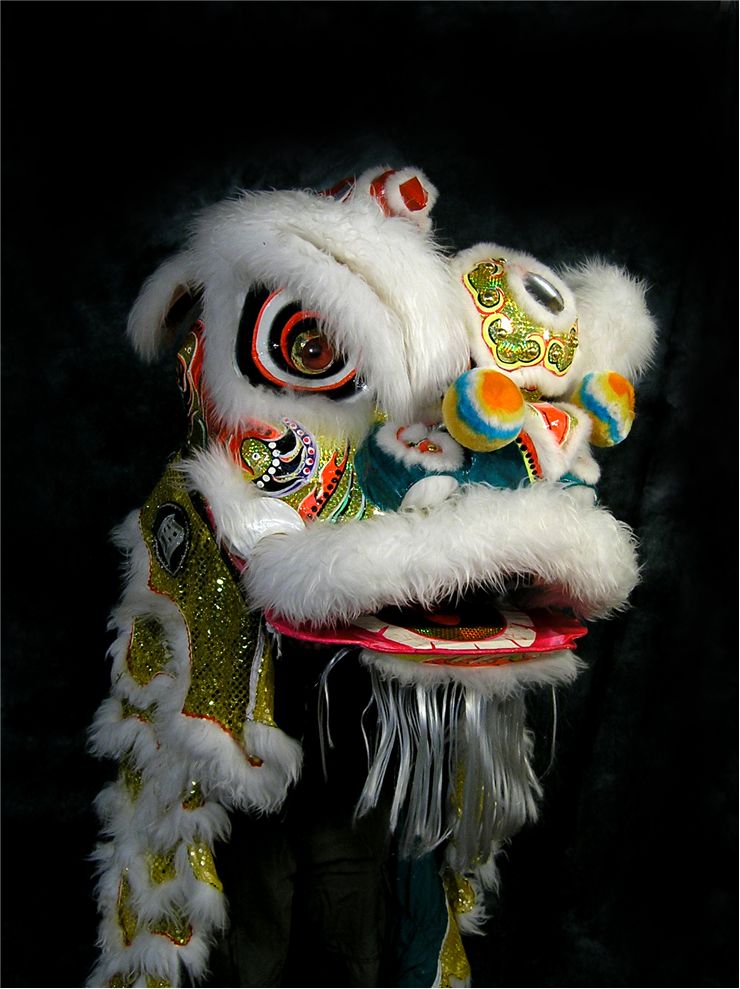Lion Dance - Asian Dance
In the continent of Asia, Chinese dance known as lion dance has managed to become one of the most popular religious and entertaining dances. After more than a thousand years of its use in China, surrounding countries of Taiwan, Japan and Korea accepted this dance into their culture, modifying it in their own ways. The basic principle of this traditional dance is to mimic the movement of lion while wearing the elaborate lion costume. Even though some of the lion costumes can be very complicated in design, with almost unrecognizable features to a real lion, the main difference between lion dance and very similar popular Dragon dance is that Lion dance requires the use of only two people. Dragon dance requires use of many people who by holding the wooden poles control the movement of the dragon above them, and Lion dancers are almost totally covered by their costume.
The birth of Chinese Lion dance can be found in their religion. According to the ancient stories, one monk received the vision that only dancing lion can protect his people against the evils that plagued the lands. With no real lions in their area, they constructed the costume that looked like a lion but it also included many other pieces of animal forms, borrowed from the good-natured animals that lived nearby.

During the millennia of Lion dance use, several different styles developed across the Asia. In Northern China, lion dance was usually performed as a mean of entertainment to the imperial court members and other noblemen. The sophisticated crowd demanded more colorful and elaborate costumes (red, orange, yellow and sometimes created from furred materials), with acrobatic and dangerous choreographies (for example, two dancers perform their choreography while balancing on a giant ball). They can be danced by one lion, or in family packs that include male, female and two young lions.
Chinese Southern Lion was more symbolic and religious. It was performed by all classes of people in a ceremony which scared evil spirits away and summoned good luck and fortune. Appearance of southern lions is different than from north, and the costumes were blessed before any performance. Some of its notable features are larger eyes (to more easily spot the evil spirits), mirror on the forehead (to ward against the demons) and horn at the top of the head (to please the gods). In modern times, the symbolic lion dance which brings wisdom, good fortune and protection from evil is often performed at the weddings, store openings, and other celebrations.
To dance the Lion dance is a great honor in Chinese tradition, so over the centuries various practitioners of Kung Fu and Wuxia martial arts implemented their knowledge into creation of very specific dance style - Kung Fu Lion Dance. With costume that is specifically designed to be more sturdy and heavy, talented martial arts tasters practiced for years before gaining the honor of performing in front of a crowd. To have a martial arts school with several pairs of Lion dancers is considered to be one of the highest honors.
Taiwanese Lion can be separated in two types - open mouthed and close mouthed. Its popularity there is great, and children in schools are taught the choreography for this interesting dance. Lion dance in Japan was been incorporated into their religious ceremonies of Shinto religion, with many varying designs of lion costume. Korea also has a lion dance, often danced at the New Year celebration as a bringer of fortune and to scare evil spirits.
